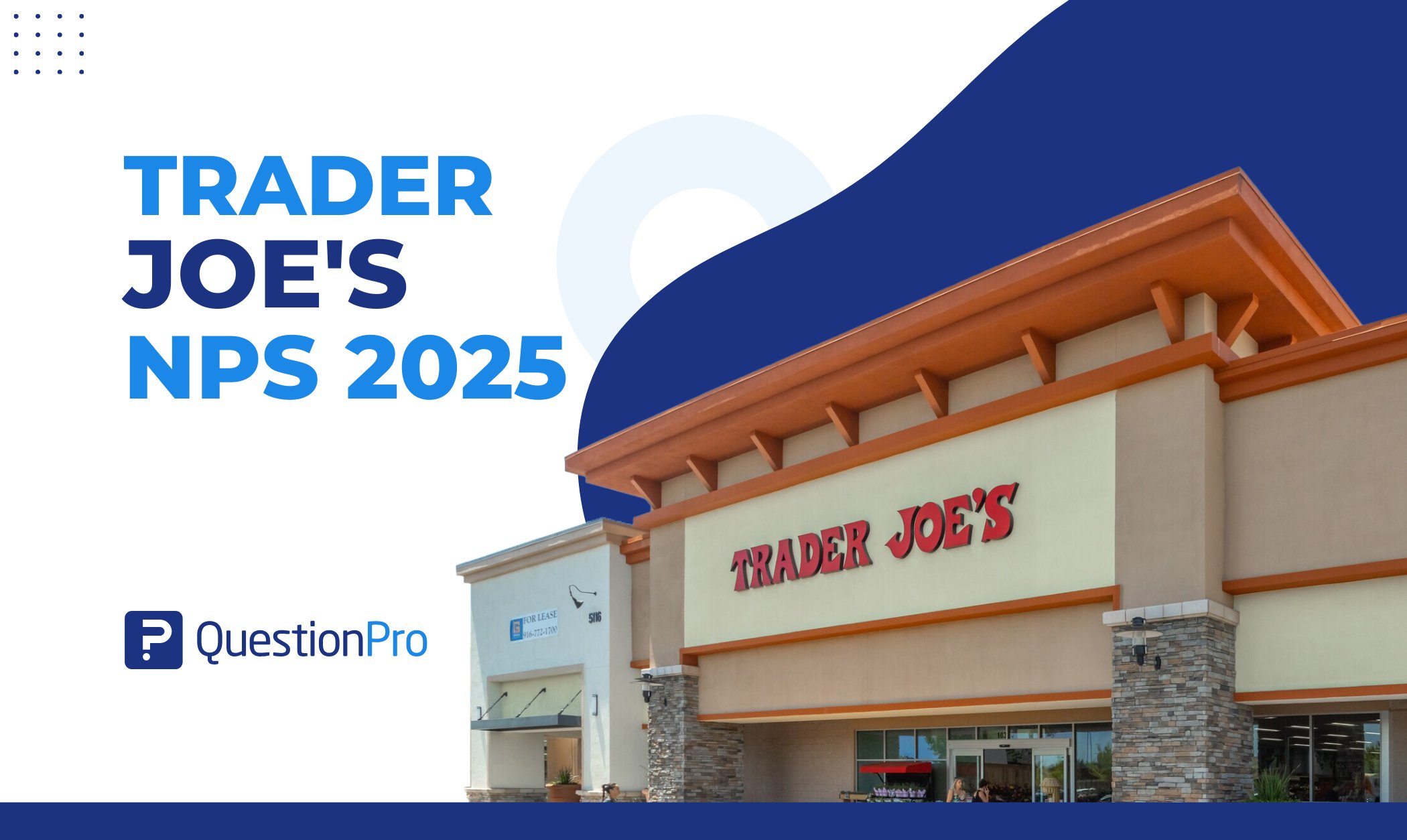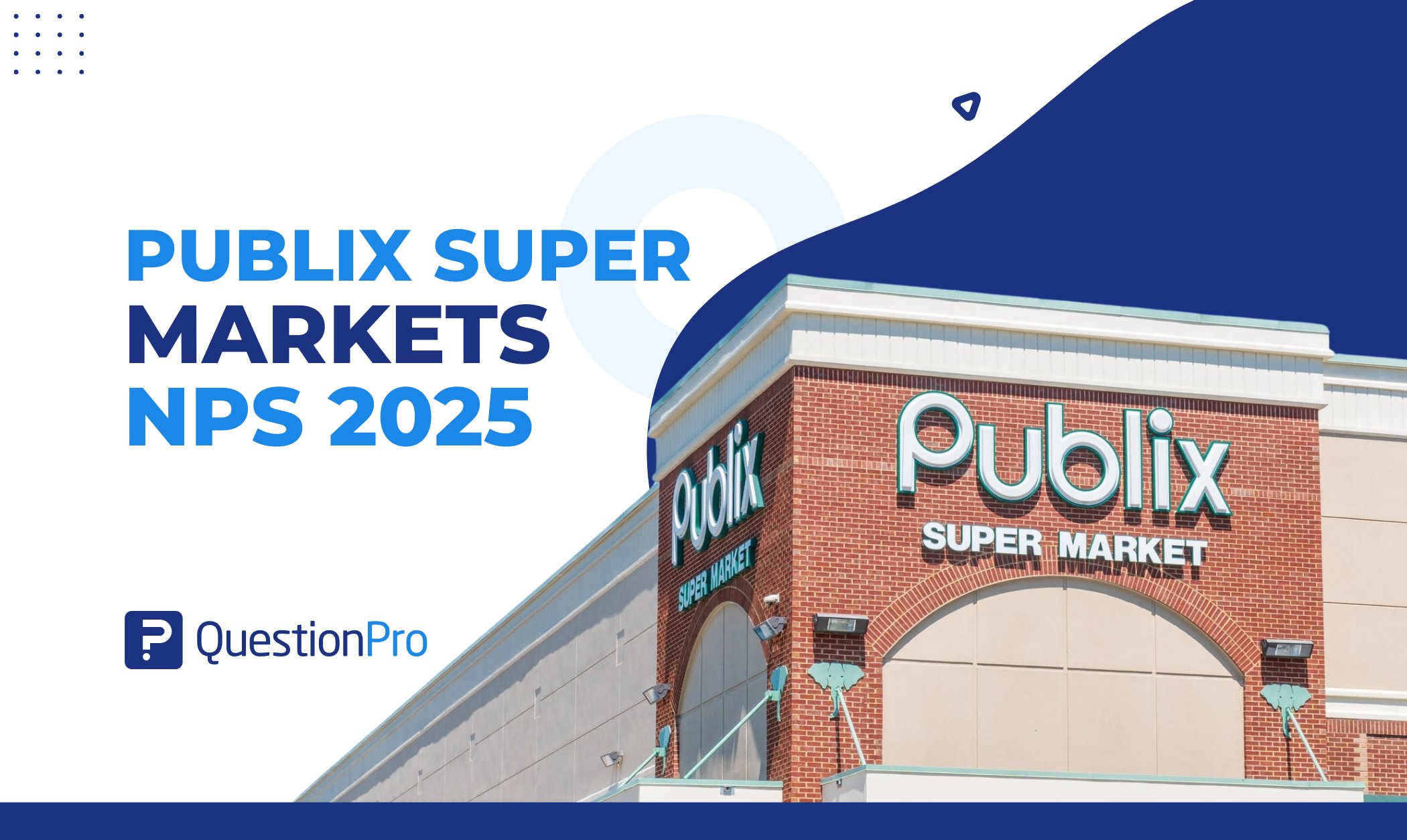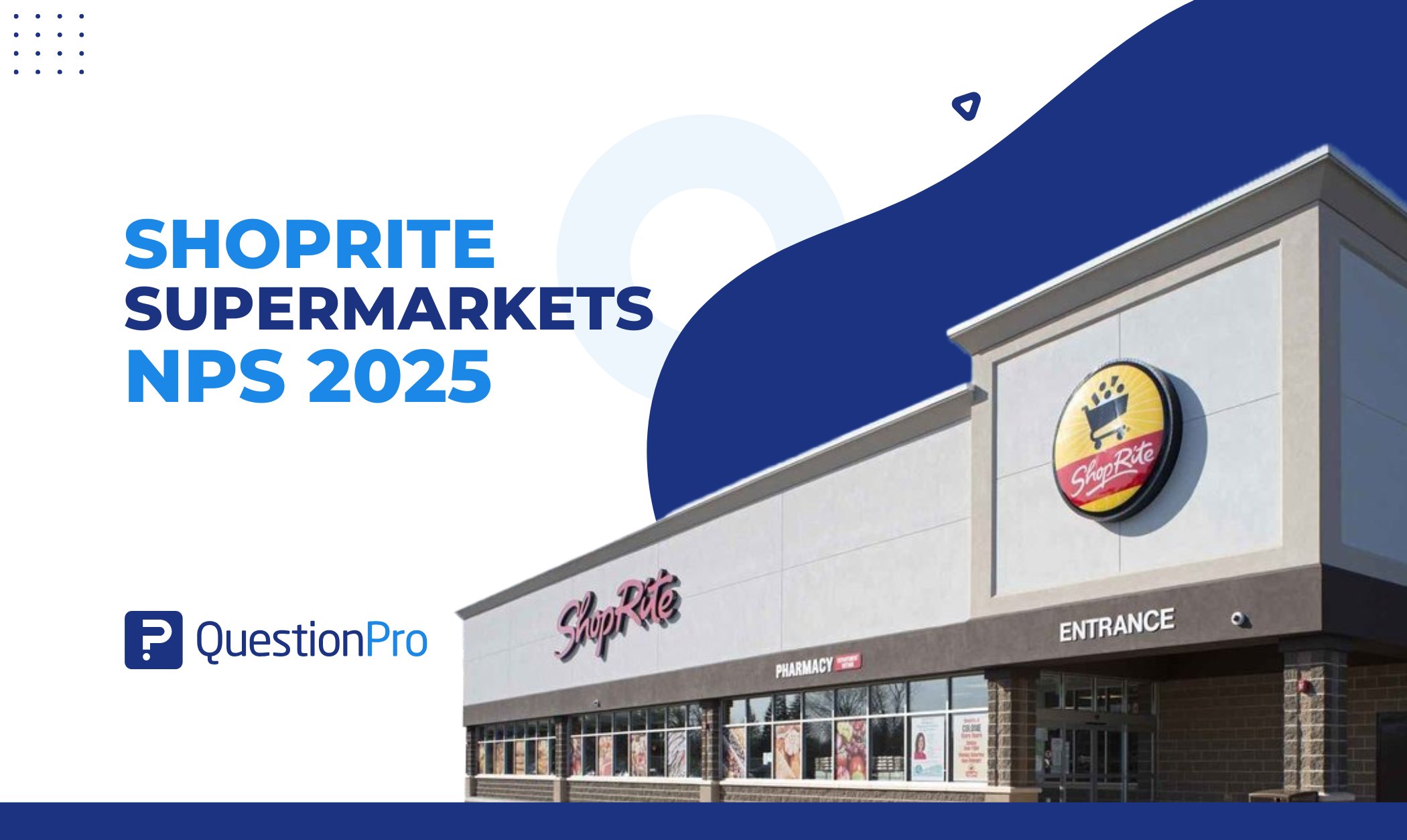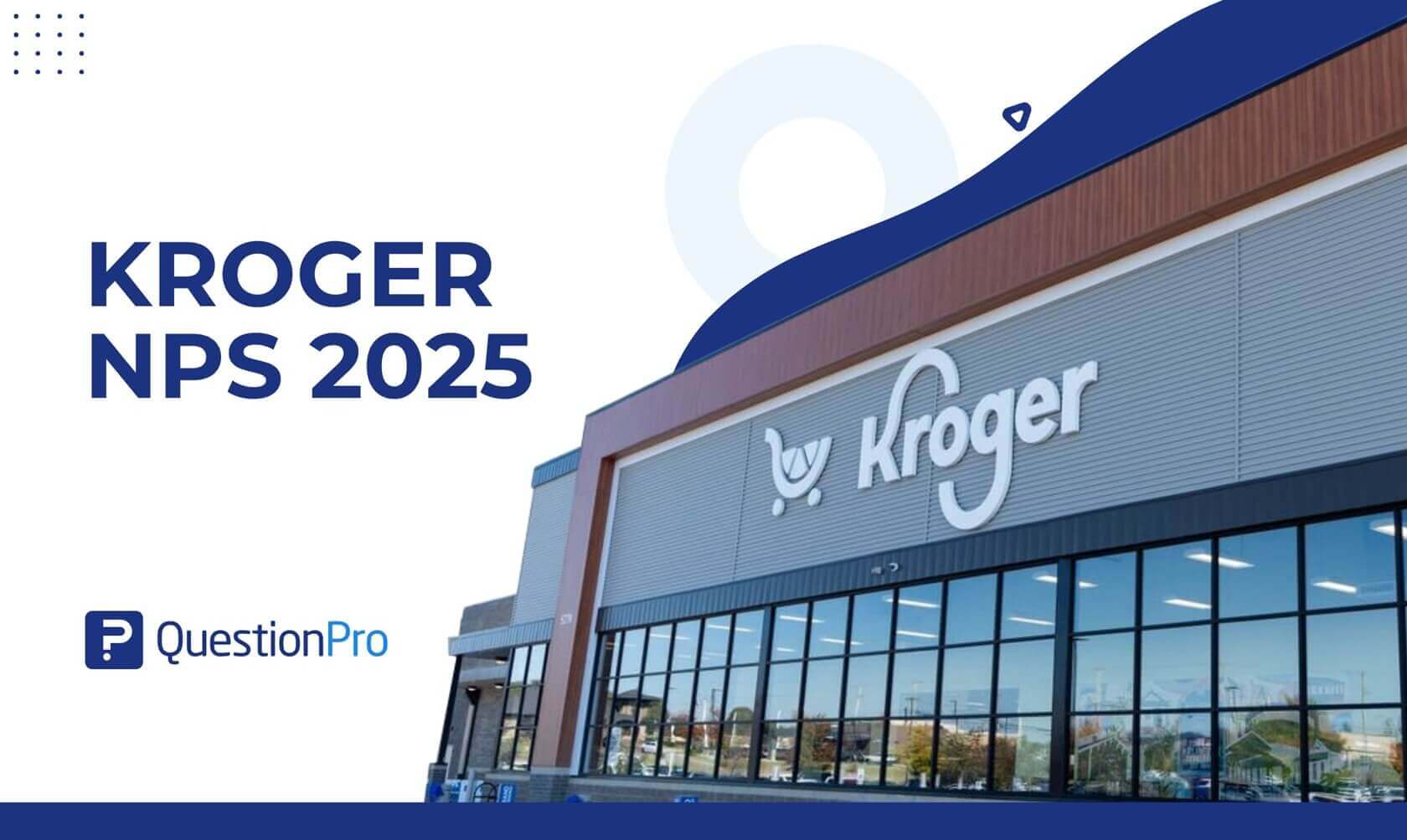
Every customer interaction is important, especially for major grocery chains like Kroger. Using NPS as a key benchmark, we can better understand how Kroger is performing in 2025 and what it means for its customer relationships.
Continue reading to learn Kroger’s latest NPS score and how it compares to the grocery industry average, and what that says about the customer experience. We’ll also discuss the numbers, spotlight areas where there’s room to grow, and share how you can use these insights to boost satisfaction and build loyalty in your own business.
What is Net Promoter Score?.
Net Promoter Score NPS is a widely used customer experience metric that measures how likely your customers are to recommend your brand, product, or service to others. It’s a powerful tool that helps businesses understand customer loyalty and overall satisfaction with a single, straightforward question:
“On a scale of 0 to 10, how likely are you to recommend us to a friend or colleague?”
Based on their response, customers are grouped into three categories:
- Promoters (9–10): These are your most loyal customers. They love your brand and actively promote it through word of mouth.
- Passives (7–8): These customers are satisfied but not thrilled. They’re not likely to spread negative feedback, but they’re also not actively recommending your business.
- Detractors (0–6): These are unhappy customers who can damage your reputation through negative reviews or feedback.
Calculating your Net Promoter Score is simple:
NPS = Percentage of Promoters − Percentage of Detractors
The score can range from -100 to +100. A positive score means you have more promoters than detractors, while a negative score suggests there’s room for improvement.
A high NPS is a great sign that shows your customers are satisfied, loyal, and willing to spread the word about your brand. It means you’re doing something right, and your customers are likely to stay with you for the long run.
On the flip side, a low NPS might signal trouble. It could mean customers are unhappy with some part of their experience, and it’s a clear indicator that something needs to change.
So, what counts as a good NPS? That really depends on your industry. Different sectors have different standards, which is why benchmarking, comparing your score against others in the same space, is so important. It helps you see where you stand and what steps you can take to improve.
Kroger NPS Score Breakdown & Performance
According to QuestionPro’s Q1 2025 Benchmarking NPS and CSAT Report, the grocery industry’s average NPS is 37. Kroger’s NPS score is 30, which falls slightly below the industry average.
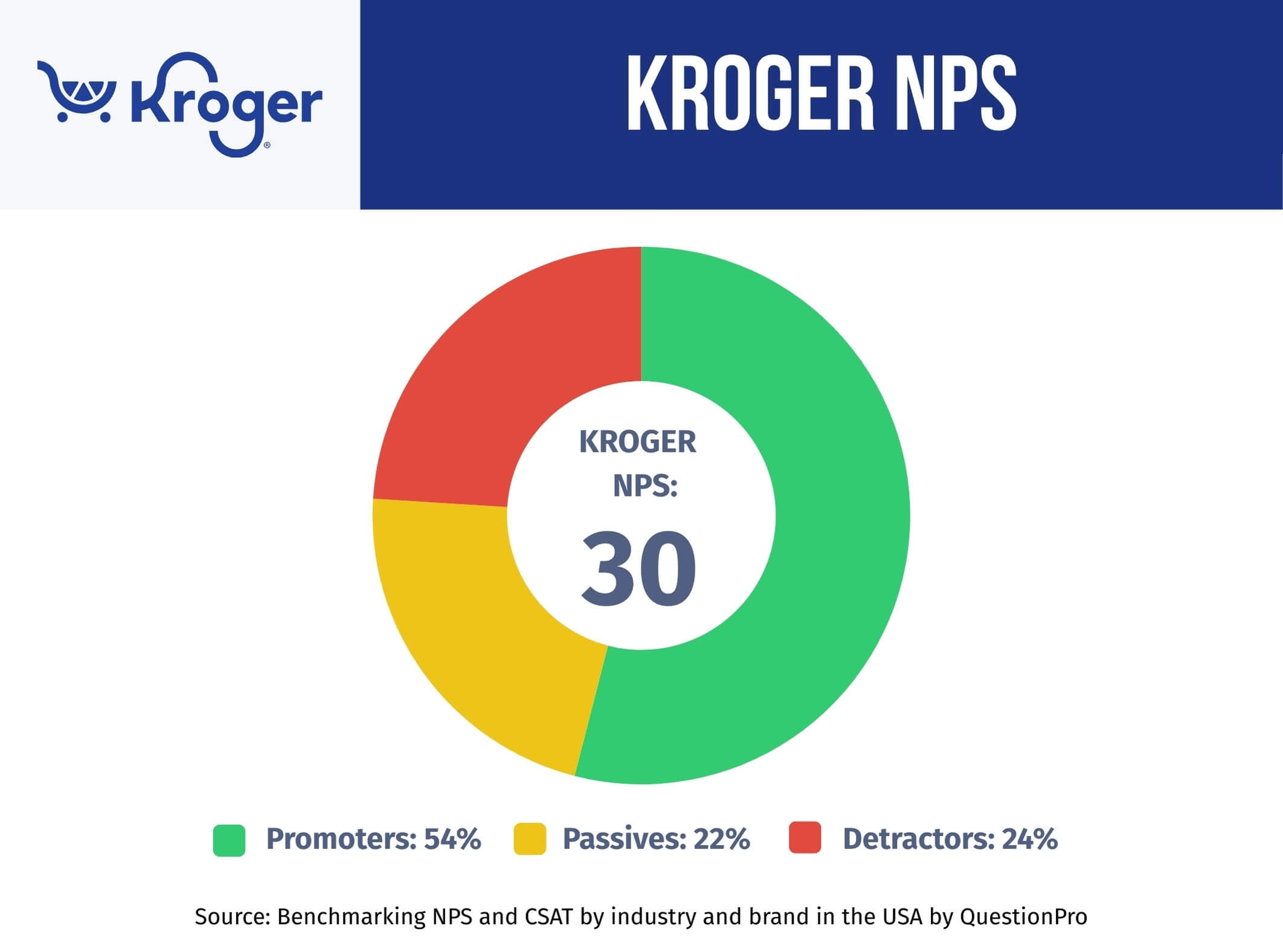
Let’s take a closer look at Kroger’s NPS:
- Promoters: 54%
- Passives: 22%
- Detractors: 24%
With an NPS of 30, Kroger is performing reasonably well, but there’s still room for improvement. While the majority of customers have a positive experience, the presence of Detractors is pulling the score down.
To boost customer loyalty and satisfaction, Kroger may benefit from addressing the concerns of dissatisfied customers and finding ways to turn more of them into loyal Promoters.
How Does Kroger Compare to Industry Benchmarks?
Kroger’s NPS is slightly below the grocery industry average of 37. This suggests that while many customers are satisfied, fewer are likely to recommend Kroger compared to other top-performing grocery chains.
With a solid percentage of Promoters, Kroger is doing well in many areas. However, the lower-than-average score indicates there’s still room for improvement. Whether it’s refining customer service, improving store layout, or enhancing product offerings, focusing on these areas could help Kroger boost customer loyalty even further.
By identifying what’s holding some customers back and making targeted improvements, Kroger has the potential to close the gap and strengthen its reputation over time.
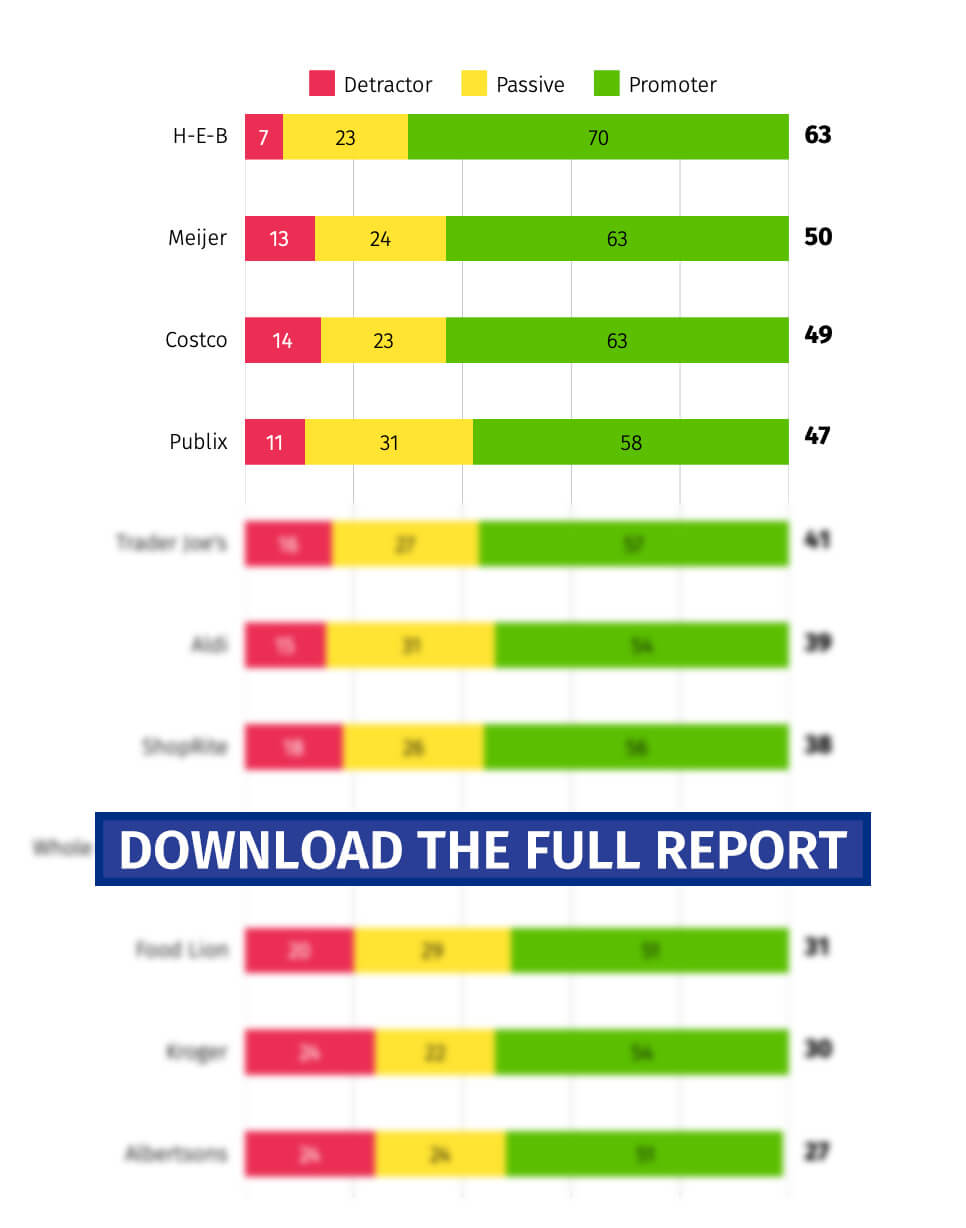
These insights are based on QuestionPro’s latest study, which surveyed 1,000 participants to measure the NPS of various companies and industries. The report reflects real customer opinions from Q1 2025 and is updated quarterly.
What’s Impacting Kroger’s NPS Score?
While many customers have positive experiences with Kroger, several recurring issues are holding the brand back from reaching a higher Net Promoter Score. Based on real customer reviews, here are some common pain points:
- Problems with Online Orders and Deliveries: Customers often get charged for items they didn’t receive or receive wrong substitutions. Getting help or refunds can take a long time.
- Rude or Unhelpful Staff: Some shoppers shared that store or pickup staff were rude or didn’t care about customer service, which made their visits unpleasant.
- Poor Product Quality: People complained about spoiled produce, bad meat, and store-brand items like noodles not cooking properly.
- Long Lines and Not Enough Help in Stores: Many stores don’t have enough cashiers, so customers are forced to wait in long lines or use self-checkout, which can be frustrating.
- Unfriendly Store Policies: Some policies, like digital-only deals or limits on gift card purchases, are confusing or difficult, especially for older customers.
These recurring problems suggest Kroger may need to improve service quality, staff training, and online shopping reliability to increase customer satisfaction and boost its NPS.
How to Measure and Improve Your NPS?
Measuring and improving your Net Promoter Score (NPS) doesn’t have to be complicated, especially when you use a platform like QuestionPro. Here’s how to get started and make the most of your customer feedback:
1. Start with a Quick Survey
Use QuestionPro’s simple NPS survey template to collect customer feedback. Start with the standard 0–10 rating question and follow up with an open-ended AskWhy to understand their reasons. Begin by asking the essential question:

This is rated on a scale from 0 to 10. Follow it up with an open-ended question like, “What’s the reason for your score?” to get deeper insights into what your customers are thinking.
Once your survey is ready, send it out via email, text, QR codes, or a shareable link. If you want to reach a specific group of people, you can use QuestionPro Audience to target by age, location, industry, and more.
3. Watch Results
QuestionPro automatically groups your customers into Promoters, Passives, and Detractors as responses come in, and updates your NPS score in real-time. The easy-to-use dashboard helps you spot trends instantly.
3. Act on the Feedback
Don’t just collect feedback, but use it to improve. Address concerns, improve the experience, and show customers that their opinions matter. You can also compare your score with industry benchmarks to see how you’re doing against competitors.
4. Keep Improving
QuestionPro gives you the tools to track customer satisfaction over time, identify patterns, and make smart changes. It’s a powerful way to build trust, loyalty, and lasting customer relationships.
Track Latest NPS Easily with QuestionPro
Want to know how others are doing? Check out the Q1 2025 NPS Benchmark Report for real industry insights and top-performing brands.
Looking to boost your NPS? Reach out to QuestionPro experts for personalized tips to improve customer satisfaction and loyalty.
Kroger isn’t the only company in the grocery industry with valuable lessons for those looking to improve their customer service and experience. Below, we recommend a few articles where you can learn how other major brands manage to maintain a high NPS and a loyal customer base — you’ll surely find some useful insights along the way.




